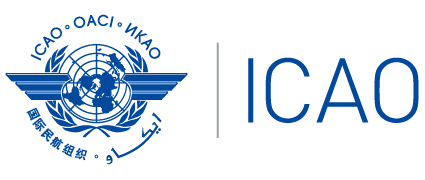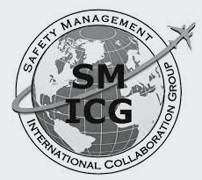ATCO Student/Trainee Reaction to Errors
ATCO Student/Trainee Reaction to Errors
Article Information
Category:
Content source:
Content control:
Last modified:
20.Jun.2022
Article UID:
Purpose
This article describes different reactions of ATCO students/trainees on their own errors, on errors of other students and the subsequent instructor’s analysis of the errors made during the training process. It presents a number of findings which may support the assessment of students/trainees in terms of their personal capabilities for teamwork.
Errors Taxonomy
There are many approaches used to establish an error taxonomy, nevertheless no particular approach has been universally recognised as the most appropriate to all areas of the training process.
All approaches are based on the understanding of the errors which are attributed to human behavior. Error is strongly related to the human capabilities for reasoning and judgment and from this perspective it is regarded as a part of the human cognition and knowledge in general, and self reflecting in particular. That is the reason why the error issues are so central in the processes of teaching and training.
Many schools of thought have made attempts to classify the errors and to include them into taxonomies.
One of the many examples of such error classification taxonomy which could directly relate to ATM operations, is the error classification method developed by Prof. Dr. Dieter Zapf who define two classes of errors: Intellectual Regulation errors and Flexible Action Pattern errors. Their sub-classes are as follows:
Sub-classes of Intellectual Regulation errors
- Thought Errors – plans are poorly developed although one knows the necessary system features;
- Memory Errors – a part of a plan is forgotten and not executed;
- Judgment Errors – one cannot interpret feedback after an input.
Sub-classes of Flexible Action Pattern errors
- Habit Errors –a correct pattern of action is used in a wrong situation;
- Omission Errors – one does not execute a well known sub-plan, often because of some interruption;
- Recognition Errors – one does not notice a well known message or mistakes it for another.
Error Management in ATC
The importance of the topic in controllers’ trainings can be seen in “Threat and Error Management (TEM) in Air Traffic Control” where three types of errors are stated to be: “(1) Errors can be spontaneous (i.e. without a direct link to specific, obvious threats), (2) linked to threats, or (3) part of an error chain.
Examples of errors would include: not detecting a readback error by a pilot; clearing an aircraft or vehicle to use a runway that has already been occupied; selecting an inappropriate function in an automated system; data entry errors, etc.”
Reaction to Errors
Reaction to errors is an important part of any training process. There are two possible variants to react from trainers’ point of view:
- To correct the student/trainee; or
- To provide opportunity for self-correction.
In group training various combinations of the above are possible depending on the acceptability of trainee/students to correct each other optionally or obligatory, etc. The analisys of the numerous aspects of the errors made by the students, holds the key to the student/trainee improvement. In addition it enables the trainer to adjust his/her work to some of the typical errors for the group as a whole and to any trainee/student as an individual.
The analysis of errors made by trainees/students is a crucial part of the training process. It includes communication skills, utilisation of team work concentrating on discussing problems and actions and stresses on the trainer’s competencies, in particular for giving and receiving feedback in a proper way. .During the process of analysing the errors, it is important for the trainers to be impartial (trainers should be detached from the students personal characteristics) , and concerned with the group advancement especially when chain of (repetitive?) errors has been detected to re-occur within the group.
Errors and Error Correction
In “Errors and Correction: What Do Students Learn?” Professor Roy Lyster and associate Professor Ranta state that the research focused on the issue of error treatment in classrooms in the past 20 years has continued to pose the questions framed by Hendrickson in his 1978 review of feedback on errors in classrooms. These questions are:
- Should learners’ errors be corrected?
- When should learners’ errors be corrected?
- Which errors should be corrected?
- How should errors be corrected?
- Who should do the correcting?
There is no only one possible answer to these general questions. Answers depend on the aims and goals and the concept that the trainer uses for designing and delivering training. However it is certain that the treatment of errors is situated in the field of feedback and this fact determines the behavior of both trainer and trainee/student.
Errors, Threats and Undesired Situations
Reactions on errors is widely used in the assessment of student/trainee improvement in controllers’ training. Safety issues in ATC are broken down to threats, errors and undesired situations. In this row it is common sense that only errors are regarded as the issue which could be most directly addressed, prevented and mitigated provided proper training is received.
Related Articles
Further Reading
ICAO
- Threat and Error Management (TEM) in Air Traffic Control, International Civil Aviation Organization, ICAO, October 2005
EASA
- Air Traffic Controlers' Licencisng and Certification, Consolidated version: Technical requirements and administrative procedures related to Commission Regulation (EU) 2015/340 and AMC and GM to ATCO, August 2015
EUROCONTROL
FAA
- Aviation Instructor's Handbook, FAA, 2008
Others
- Mayo, Deborah. 1996. Error and the Growth of Experimental Knowledge. Chicago: University of Chicago Press
- Douglas Allchin, Minnesota Center for the Philosophy of Science, Error Types, in Perspectives on Science
- Zapf, D.; Brodbeck, F.C.; Frese, M.; Peters, H. &Prumper, J. (1992) Errors in Working with Office Computers: A First Validation of Taxonomy for Observed Errors in a Field Setting, International Journal of Human-Computer Interactions,
- Lyster, R. and Ranta, L. (1997). Corrective feedback and learner uptake: Negotiation of form in communicative classrooms., Studies in Second Language Acquisition
Categories







